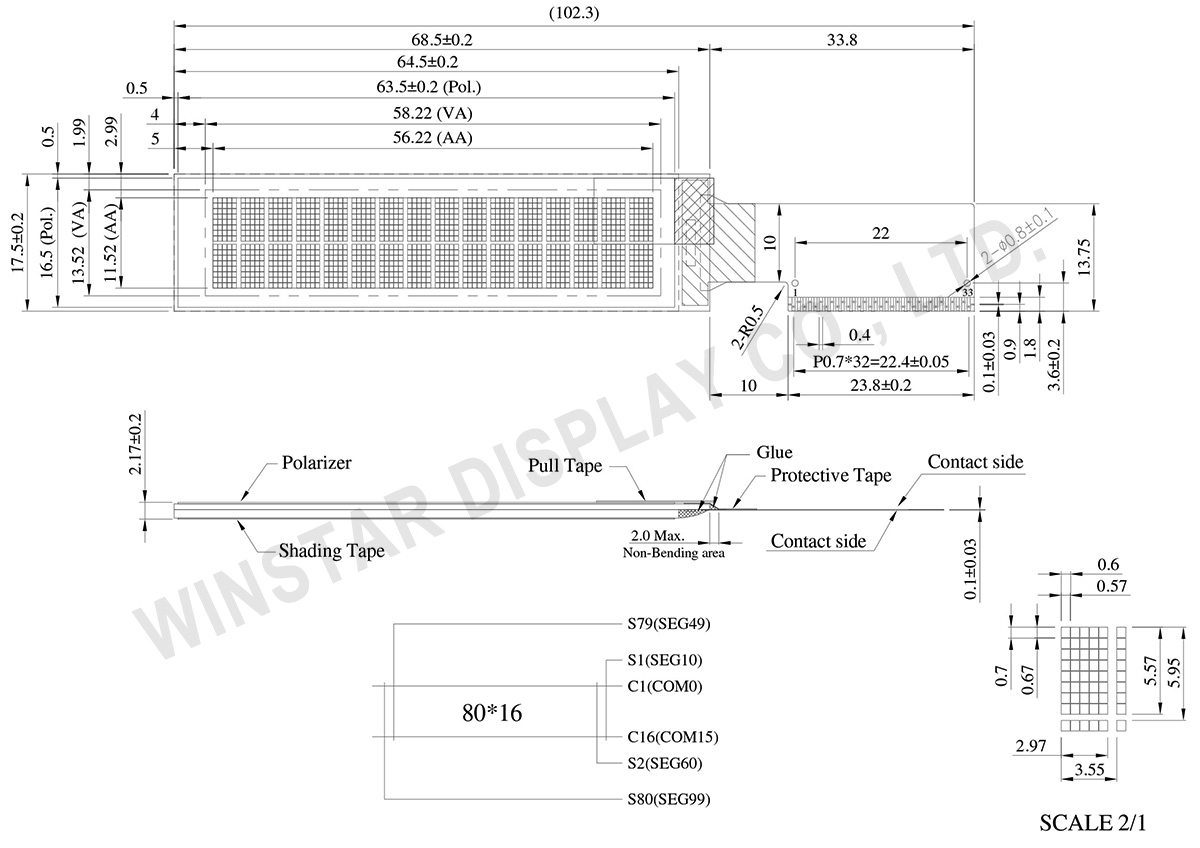The 16x2 COG Character OLED Display Module (Model: WEO001602C) features a COG (Chip On Glass) design, providing a high-performance and reliable display solution. This OLED module is known for its clear display and robustness, making it suitable for a variety of applications.
The module dimensions are 68.5 x 17.5 mm with a thickness of 2.17 mm, and the active area is 56.22 x 11.52 mm, with a diagonal size of 2.26 inches. Equipped with an SSD1311 driver IC, the WEO001602C supports an integrated character set, including ASCII, English, European, and Japanese characters. Each character is made up of 5x8 pixels, ensuring detailed and clear text representation.
The display mode of this module is 2 lines, with each line capable of showing 16 characters. Due to the self-emissive nature of OLED technology, this module does not require a backlight, resulting in a lighter and thinner design and an enhanced contrast ratio of 10,000:1. Additionally, it features an ultra-wide viewing angle of up to 175 degrees, ensuring consistent display quality from various angles. The module also offers low power consumption and a broad operating temperature range, demonstrating its versatility.
The operating temperature range of the WEO001602C is -40°C to +80°C, with a storage temperature range of -40°C to +85°C, allowing stable performance in extreme conditions. The module operates within a logic voltage range of 2.4V to 3.3V, with a typical value of 3V, and utilizes a 1/16 duty driving method.
Furthermore, the WEO001602C supports multiple interface options, including 6800/8080 8-bit parallel and I2C/SPI serial interfaces, offering flexible connectivity to meet various system requirements. The module series also provides various Flexible Printed Circuit (FPC) options to address diverse customer needs.
With its reliable display quality, wide operating temperature range, and flexible interface options, the WEO001602C OLED Display Module is a practical alternative to traditional LCD modules. We recommend considering this 16x2 character OLED module to improve your product's display performance, achieving better display quality and lower power consumption.
 FPC Options
FPC Options







